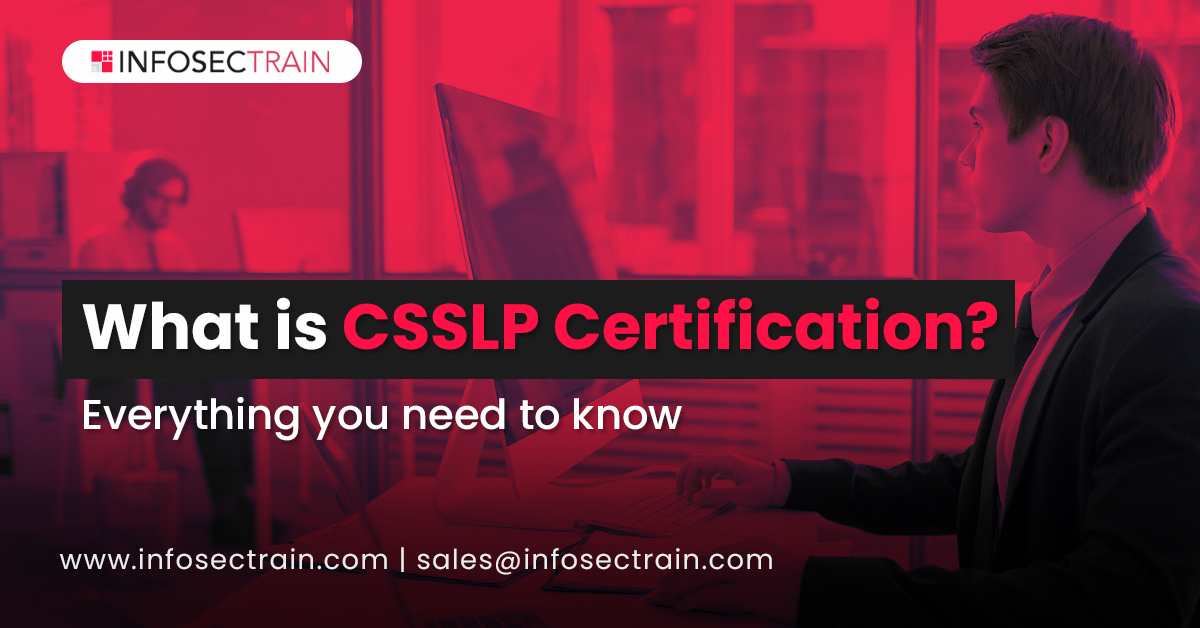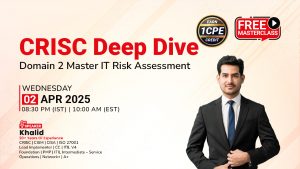What is CSSLP Certification? Everything You Need To Know
What is CSSLP Certification?
Certified Secure Software Lifecycle Professional (CSSLP) is a certification introduced by (ISC)2 in 2008 that concentrates on web application security within the software development lifecycle (SDLC). The CSSLP certification is perfect for software developers and security professionals responsible for implementing best practices to every step of software development. This certification shows that the candidate has advanced knowledge and the technical skills to efficiently design, develop, and implement security practices in each software life cycle phase. The CSSLP certification training covers all the essential aspects of secure software development. It takes a long-term strategic view to improve the overall state of software security within an organization while providing a tactical solution.

Benefits of CSSLP certification:
The CSSLP certification shows you are an expert in application security. CSSLP is a glorious way to increase your security knowledge; therefore, you can keep your skills current and relevant. It is not product-specific, so you can effortlessly apply your skills to various technologies and methodologies. It teaches you how to protect your organization while keeping their sensitive data safe and helping in career advancement.
CSSLP Experience Requirements:
- A minimum of four years of full-time Software Development Lifecycle (SDLC) professional background in one or more of the eight domains of the CSSLP Common Body of Knowledge (CBK)
- 4-year college degree in Computer Science, Information Technology (IT), or related fields
CSSLP Exam outline:
Domain 1: Secure Software Concepts: This domain contains 10% weightage in the exam. It includes concepts of confidentiality, integrity, availability, authentication, authorization, auditing, and management of sessions. It familiarizes the candidates with fundamental concepts, principles of risk management, and governance. It also explains trusted computing concepts that can be applied in the software.
Domain 2: Secure Software Requirements: This domain contains 14% weightage in the exam. It familiarizes you with various internal and external sources from which software security requirements can be determined and covers different security requirements for the software. It understands how to develop misuse cases from case scenarios to determine security requirements, generate a subject-object matrix, and understand how it can be used to generate security requirements.
Domain 3: Secure Software Design: This domain contains 14% weightage in the exam. It explains the need and importance of designing security into the software, secure design principles, and how they can be incorporated into software design. It introduces you to different software architecture that exists and explains the security benefits.
Domain 4: Secure Software Implementation: This domain also contains 14% weightage in the exam. This domain discusses declarative versus imperative (programmatic) security, concurrency (e.g., thread safety, database concurrency controls), output sanitization (e.g., encoding, obfuscation), error and exception handling, input validation, secure logging and auditing, and session management. It also explains vulnerability databases, open web application security project (OWASP) Top 10, and dynamic application security testing (DAST).
Domain 5: Secure Software Testing: This domain contains 14% weightage in the exam. This domain understands how to develop security test cases, security testing strategies, and plans. It also guides you on how to verify and validate documentation (e.g., installation and setup instructions, user guides, error messages and release notes), how to analyze security implications of test results (e.g., impact on product management, prioritization, and break build criteria), and how to perform verification and validation testing.
Domain 6: Secure Software Lifecycle Management: This domain contains 11% weightage in the exam. It explains how to manage security within a software development methodology and security documentation. It also shows how to develop security metrics (e.g., defects per line of code, criticality level, average remediation time, and complexity).
Domain 7: Secure Software Deployment, Operations, Maintenance: This domain contains 12% weightage in the exam. This domain provides knowledge on how to perform an operational risk analysis, release software securely, manage security data, and information security continuous monitoring (ISCM). It gives an understanding of how to perform patch management (e.g., secure release, testing) and vulnerability management (e.g., scanning, tracking, triaging).
Domain 8: Secure Software Supply Chain: This domain contains 11% weightage in the exam. It explains how to implement software supply chain risk management and analyze third-party software security. It also describes how to ensure supplier security requirements in the acquisition process.
CSSLP Certification Exam details:
| Length of exam | 3 hours |
| Number of questions | 125 |
| Exam format | Multiple choice |
| Passing grade | 700 out of 1000 |
| Exam availability | English |
Should I get the CISSP or CSSLP?
If your interests and career run through IT and management, then CISSP probably makes more sense. In CISSP, you will learn about risk management, security architecture, encryption, network security, secure software development, and identity access management. On the other side, If you want to make a career in product development or testing, concepts of CSSLP certification will help you out a lot. CSSLP is much more focused on secure software development and the entire software lifecycle. Choosing between CISSP or CSSLP totally depends on your profession; both are excellent certifications but are different from each other.
How can I get CSSLP Certification?
You can prefer Infosec Train for CSSLP Certification training to get professional knowledge and an in-depth understanding of the Software Development Life Cycle. The training will be provided by highly skilled and experienced trainers. The courses will enhance your skills and help you advance your career in software development. If you want to enroll in CSSLP training, please visit the following link:
https://www.infosectrain.com/courses/csslp-certification-training/







 1800-843-7890 (India)
1800-843-7890 (India)